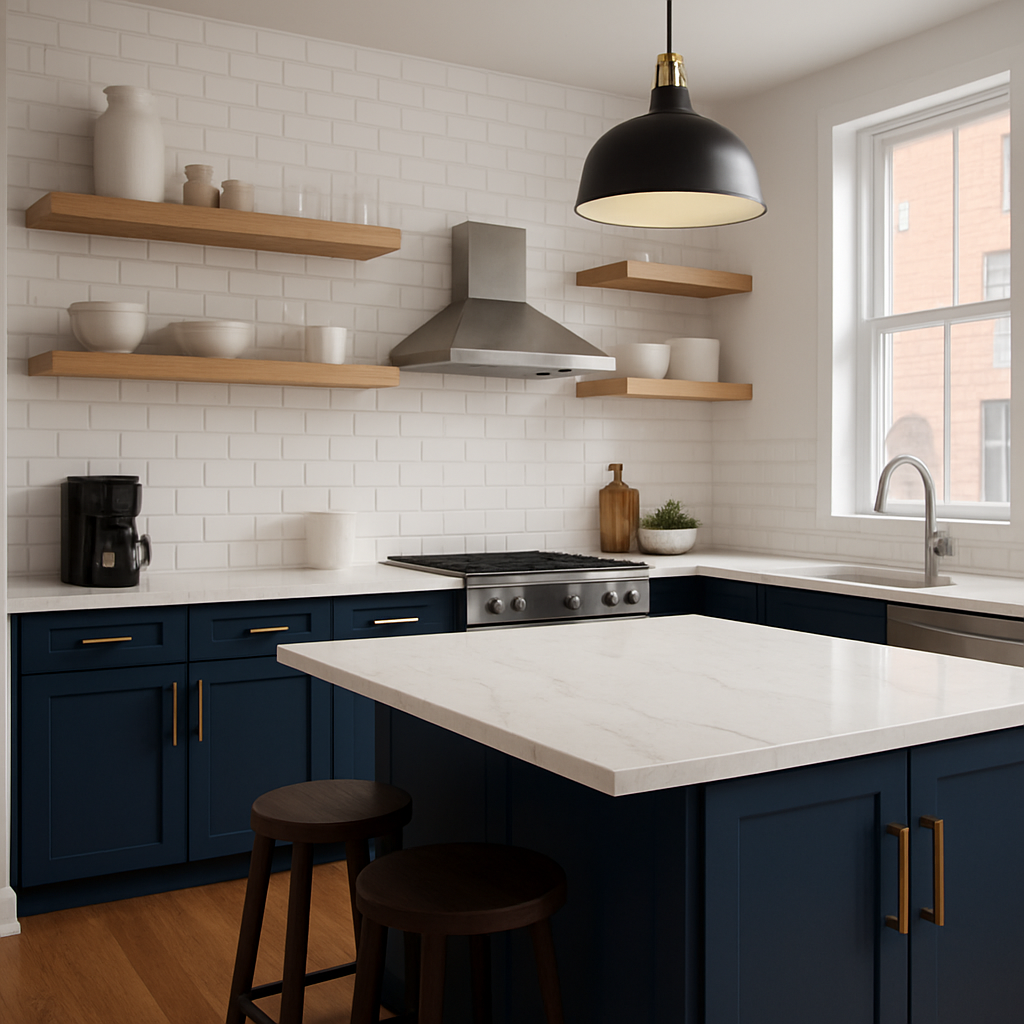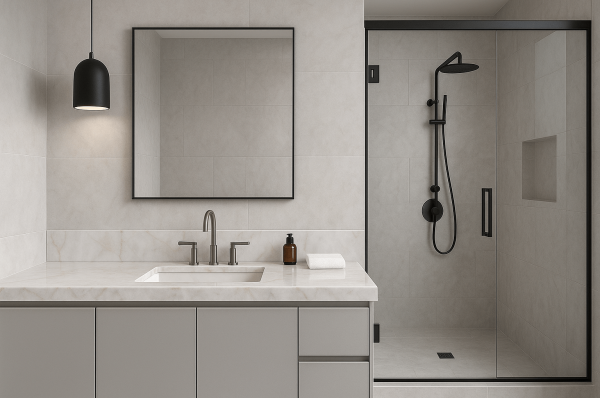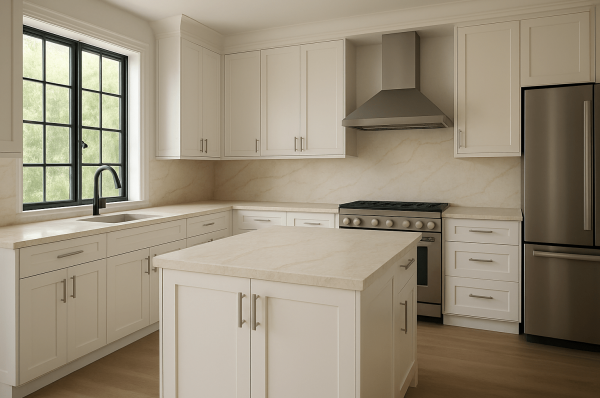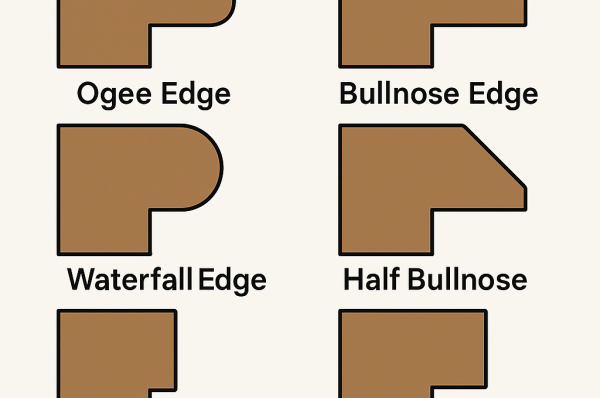6. Dark Beige
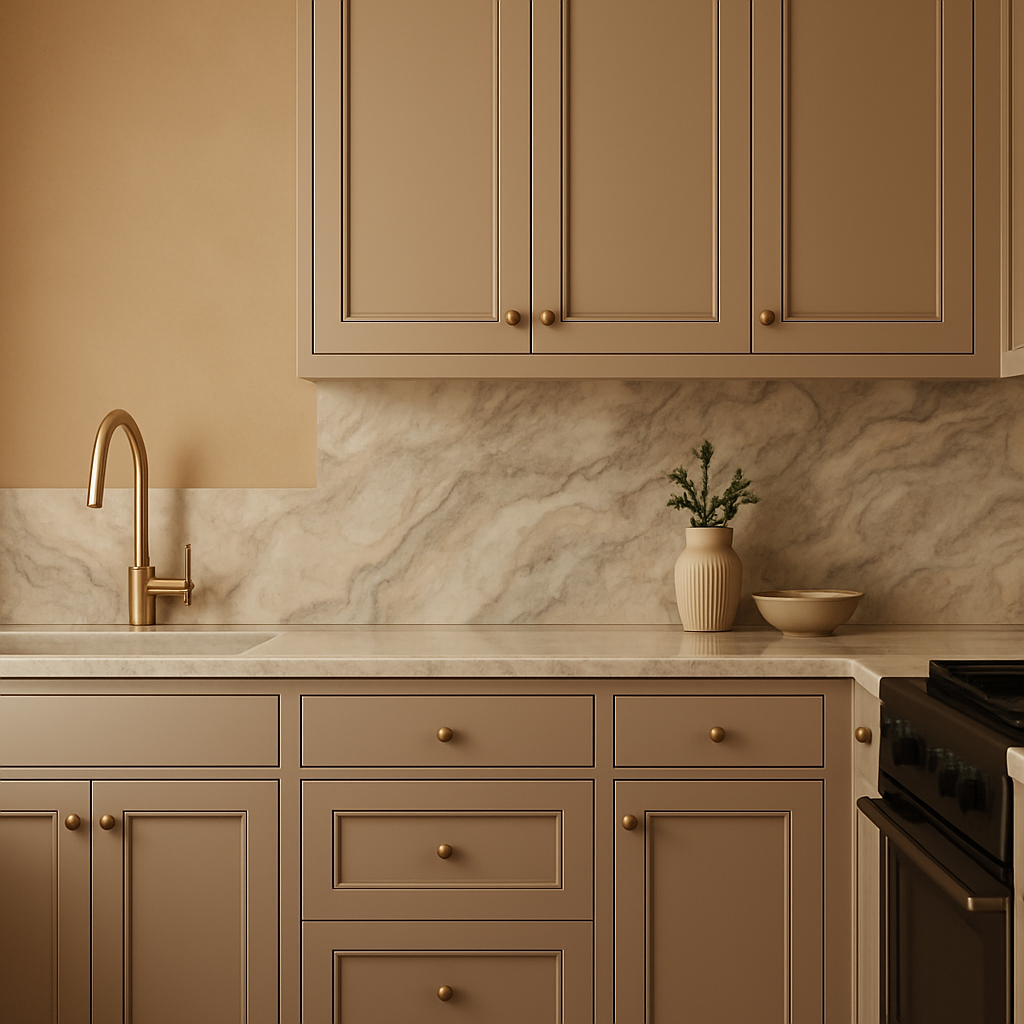
A warm “dark-beige” kitchen by Tali Roth, with taupe-gray cabinets and marble back- splash. The neutral tone feels cozy yet fresh. A shift from ultra-white kitchens, “dark beige” (warm greige/taupe) cabinetry is highlighted as a new neutral trend. Henderson describes it as potentially “the new white kitchen” – neutral but “cozier than a traditional white”. For example, one kitchen’s walls and cabinets are a mushroom-beige that coordinates with gray-veined marble counters (shown above). In another, similar-toned cabinets are paired with either stainless or brass hardware – illustrating her point that with this color “all metals look great”. The overall palette is muted and earthy: think biscuit-colored paint, cream trim, and natural stone in warm veining. The influence is a slightly vintage or European vibe (one example was likened to a “modernized Hungarian armoire” fridge panel. In summary, dark-beige offers a timeless, versatile foundation that feels more lived-in than stark white but still fresh and neutral.
7. Fun Stools
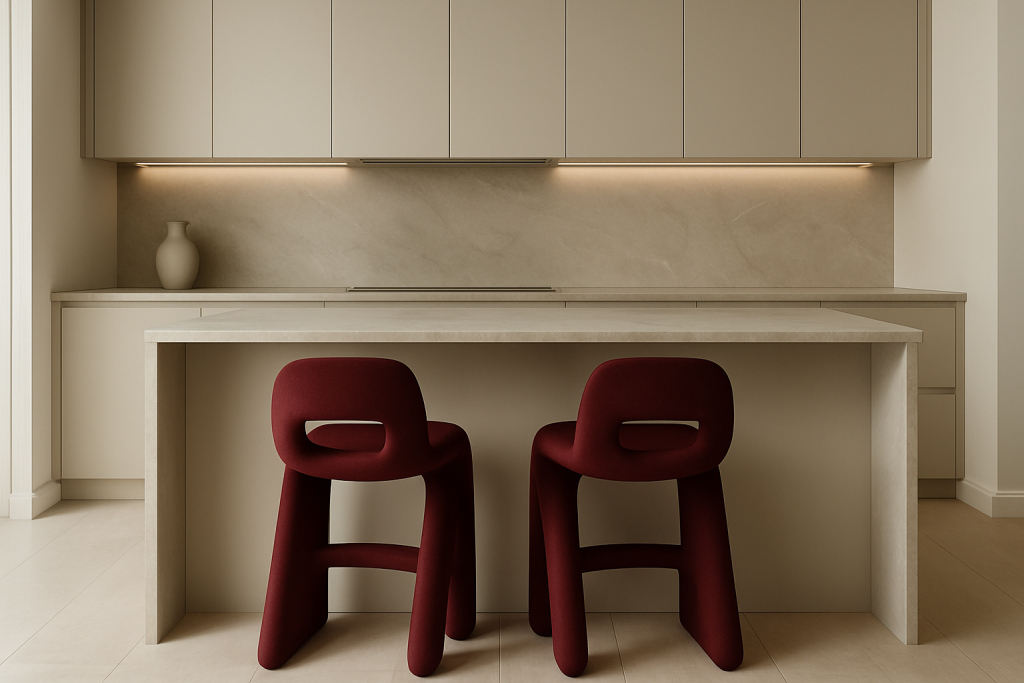
A kitchen with sculptural burgundy bar stools at the island, adding a moody pop of color against neutral cabinetry. Since kitchen islands are often unchanged during a reno, Henderson spotlights accent stools as an easy way to inject style. The idea is to pick “really fun” counter stools that either contrast the kitchen or complement it with interesting shapes and materials. In one example, Shapeless Studio chose glossy burgundy stools with retro curves; they stand out as a “moody pop of color” against an otherwise beige-and-wood palette. Another kitchen uses vintage olive-leather and wood stools that match the wall color – a subtle way to tie accents in, making the eye “feel happy” as their colors echo the room. A third has custom pedestal stools (fabric-covered cylinders) under an island – a playful Bauhaus-inspired touch. The common thread: quirky silhouettes (curved backs, twisted legs, cushy upholstery) in bold or natural colors. These stools act as “power players” in the design, introducing texture and personality. Even a simple pull-tab or visible fastener can add a handcrafted detail when the stool is the focal accessory.
8. Colorful Stained Wood
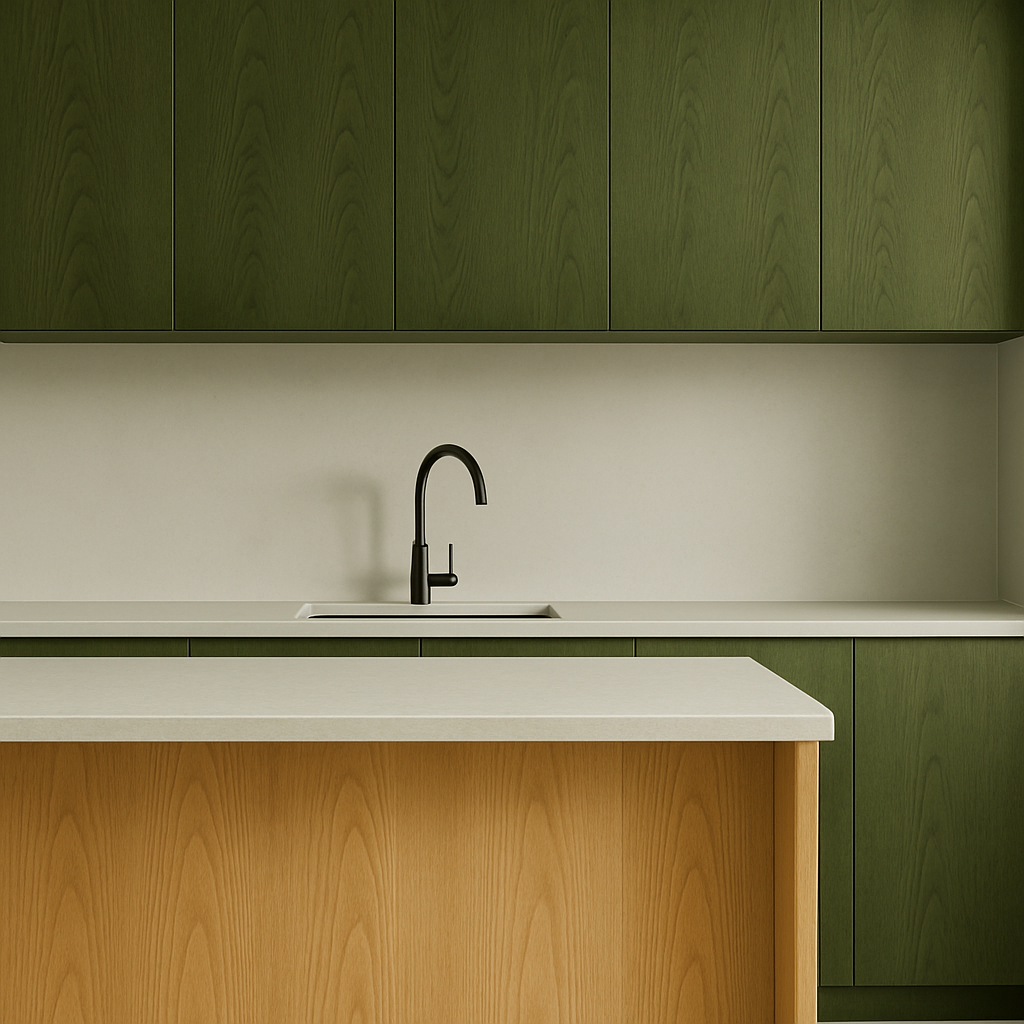
A creative kitchen with green-stained upper cabinets and a light oak island – the wood grain remains visible. The colorful stain feels modern yet organic. Here wood surfaces are stained in unexpected colors rather than painted solid. Bunge admits she wasn’t a fan of earlier loud stains (when grain was too stark), but has come to love subtler hues. In every example, the color chosen is vivid but semi-transparent so the wood grain shows through gently. Most examples in the post use green stains (sage or emerald), though blues have been spotted too. One bold YSG Studio kitchen has deep green–stained oak uppers that beautifully complement stone countertops. Another Bidgood kitchen combines rounded-edge lower cabinets in green-stained cherry with light green walls – a traditional cottage look made fresh. The feel is retro-modern: the forms may recall mid-century cabinetry, but the warm colored finish makes it feel current and earthy. Overall, the trend uses tinted wood in place of paint for a richer neutral – think olive, forest, navy – giving a room the depth of stained wood plus a splash of color.
9. Dark Hardware on Dark Cabinets
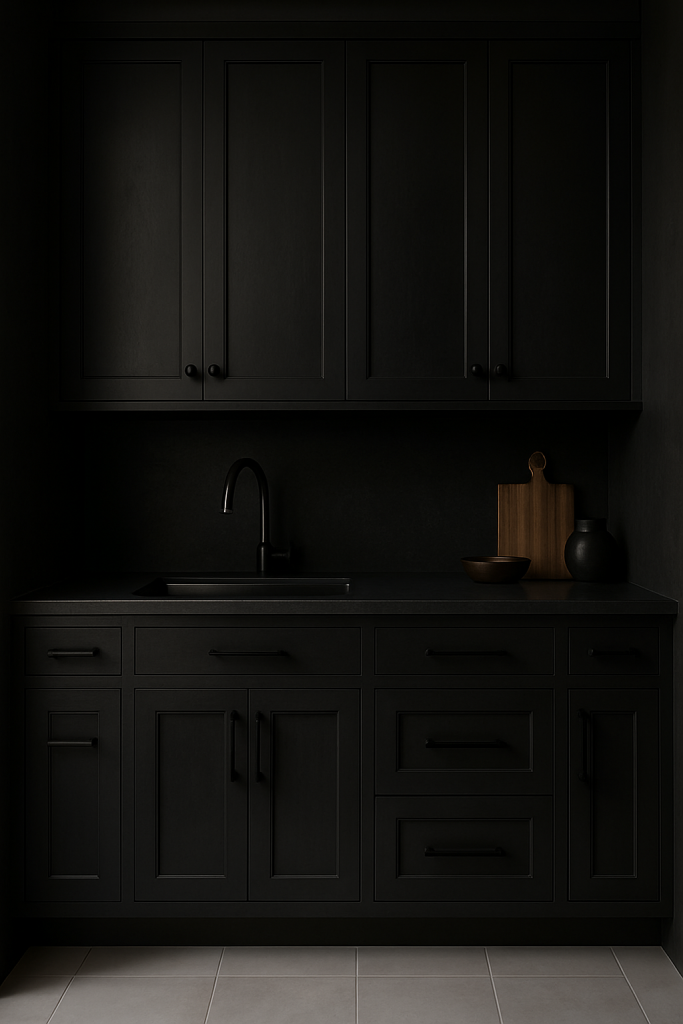
A moody dark-toned kitchen with deep charcoal cabinetry and matching black knobs and pulls. A subtle tonal move: pairing matte dark metal hardware with dark-painted or dark-stained cabinets. Instead of bright brass on white, here the knobs and faucets nearly disappear against navy or black cabinetry. Bunge notes that “tonal hardware will be a big trend” – specifically “dark hardware on dark cabinets” – because it looks “chic and simple”. In the featured example, charcoal-gray oak fronts with simple black pulls (and a muted bronze faucet) create a quiet, cohesive look. The color palette stays in deep, warm neutrals – charcoals, espresso, oxblood, perhaps with stone or wood counters. The effect is very elegant and low-contrast, giving the room a luxe, unified feel. This trend plays on minimalism and luxury: the details don’t pop individually, but together they make a sophisticated space.
10. Exposed Joinery
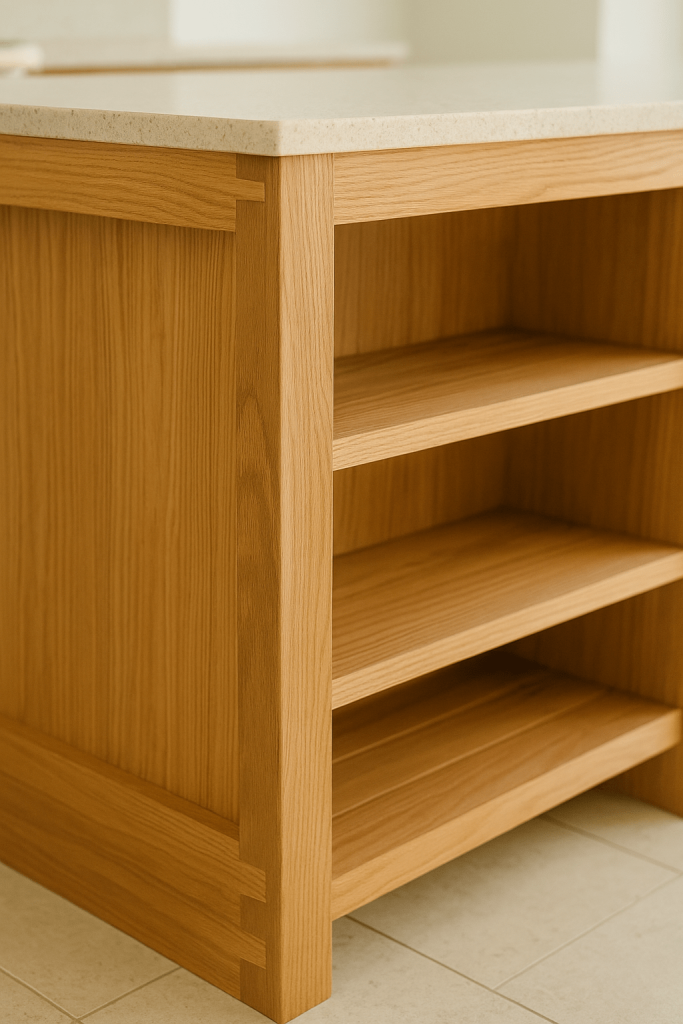
A custom kitchen island showing dovetailed joinery at the corners, paired with open wood shelving. Visible joinery details (like dovetail or box joints) are back in the spotlight. One stunning island by Rubin Studio sports exposed dovetail joints at its edges, signaling high craft. The author enthuses that this “screams custom, handcrafted, and warm” – it reads modern and vintage at once. In another kitchen (Sarah Sherman Samuel’s), joinery is shown on drawer fronts and shelf edges, proving the idea works in both contemporary and rustic spaces. Materials are almost always warm wood (oak, maple) so the joinery detail has a subtle prominence. This gives kitchens an artisanal feel – like furniture rather than mass-produced cabinetry. It suggests mid-century craftsmanship or Shaker influence, but deployed in a clean, modern context. Trend-wise, exposed joinery is a decorative statement about quality construction (and the photos are full of applause – “heart sings” and “total win” – for these examples.
11. “Organic Bauhaus”
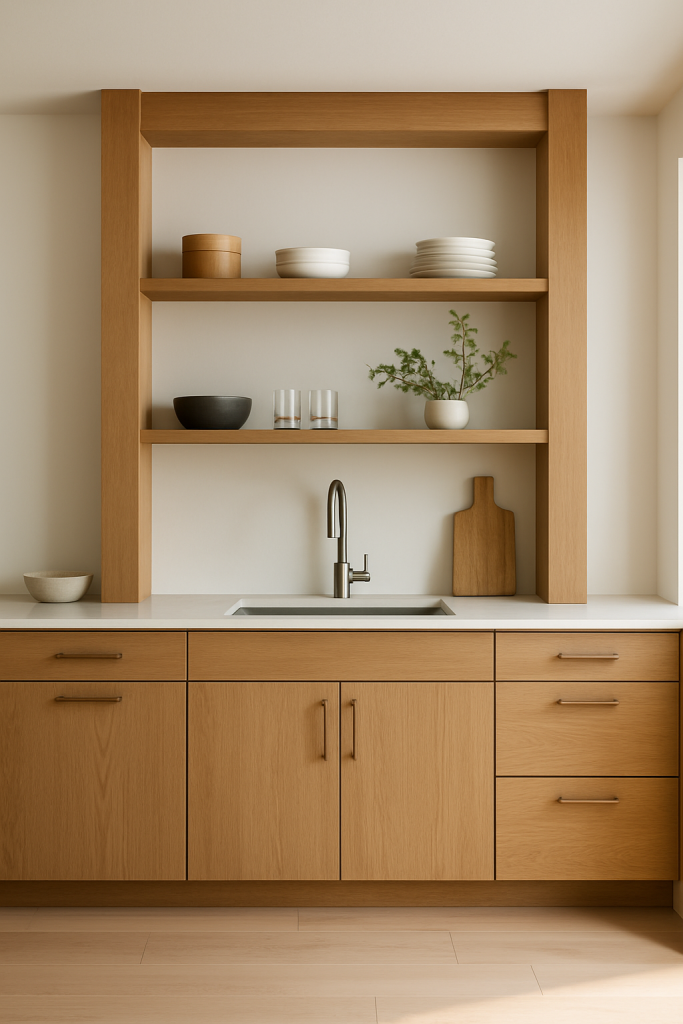
A kitchen with oak cabinets and an open shelving unit framed by thick matte wood beams – a modern take on mid-century form with natural materials. Coined by the author and her colleague, “Organic Bauhaus” describes heavy, rectilinear wood shelving or cabinet frames that recall 1950s/60s design but with a natural twist. In practice this shows up as thick oak casework, often matte-finished, surrounding glass-front cabinets or open shelves. One featured design by Patrick Maziarski uses chunkier-than-usual wood framing around windows and shelves, creating a “timeless and so chic” feel. The wood’s warm grain and texture (“organic” aspect) softens the geometric, Bauhaus-inspired shapes. Color-wise it’s almost entirely wood-toned (honey oak, walnut) against off-white walls or counters. This trend can appear in both open shelving and closed cabinets. It’s as if the rigidity of mid-century modernism has been wrapped in a natural, lived-in shell. The result is a kitchen that looks architect-designed yet inviting – modern form made warm by real wood.

